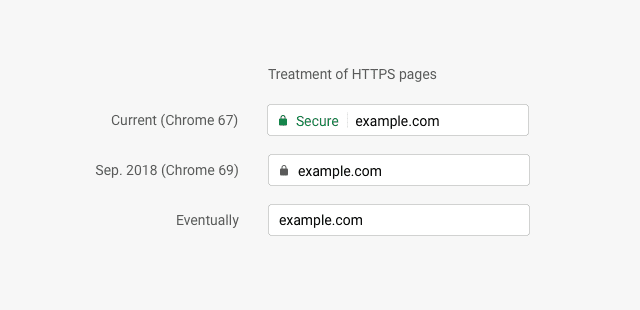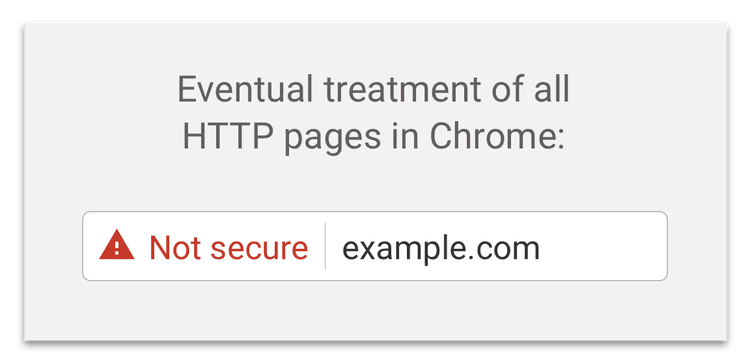
Google announced that starting in September, Chrome will stop marking HTTPS pages as “safe” sites in the address bar. Google has been working hard to promote the widespread use of HTTPS for many years. Last year it achieved better results by changing the Chrome user interface. In Chrome 56 released in January last year, the address bar began to record the password or credit card’s HTTP page as an “unsafe” site, and Chrome 62, which was released in October, began marking HTTP sites with input data and all HTTPs viewed in incognito mode. The site is an “unsafe” site.
With the release of Chrome 69 in September this year, the HTTPS site will no longer use the “security” tag, which means it will no longer use the current green security words to remind users that the site is secure:

Instead, as Chrome 70 is released in October, the HTTP site will display a red “unsafe” warning when the user enters data:

On the whole, such new regulations have achieved the default security, and strengthening the effect of insecurity has given users a big shift in thinking. The reason for this is that Google believes that “users should be safe by default, Chrome should only warn you if there is a problem with the webpage.” The ultimate goal is to let All pages in Chrome go through the HTTPS protocol.
Source, Image: chromium